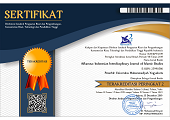Antara Ziarah Religius dan Kapitalisasi di Era Globalisasi: Catatan Etnografis Umrah
Abstract
This article is written based on ethnographical notes, through observation, interviews, and direct involvement in the lesser pilgrimage (umroh) to Medina on March 12-20, 2016. The writing focuses on the performance of the ritual and other factors which have influenced the development of the holy city from social, eco-nomic, and cultural perspectives making the modern city of Medina. This article reveals that Medina as a holy city of pilgrimage destination grows with modern capitalism with the mushrooming business in accommodation and world products. Not only does the religion of Islam mix with capitalism, but the combination of the two does not decrease the sacrality of the city and the performance of the rituals in the city. In fact, the sacrality and holiness remain intact amidst commercialization of the city in the forms of luxuriouos hotels, malls, and modern kiosks. What is more, modern Medina is a symbol of plurality with the Muslim visitors for pilgrimage coming from different countries who bring their own local cultures and various religious traditions seen in their diverse fashions, traditions, and religious rites.
Keywords
Full Text:
PDFDOI: https://doi.org/10.18196/aiijis.2016.0057.114-134
Refbacks
- There are currently no refbacks.
Copyright (c) 2016 Afkaruna: Indonesian Interdisciplinary Journal of Islamic Studies

This work is licensed under a Creative Commons Attribution-ShareAlike 4.0 International License.
Afkaruna: Indonesian Interdiciplinary Journal of Islamic Studies indexed by:












1.png)


